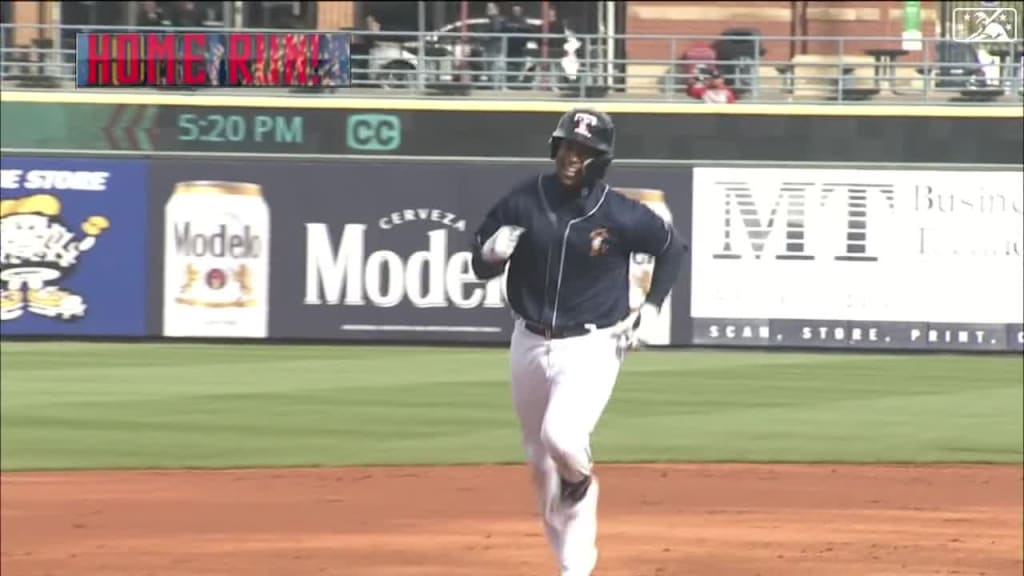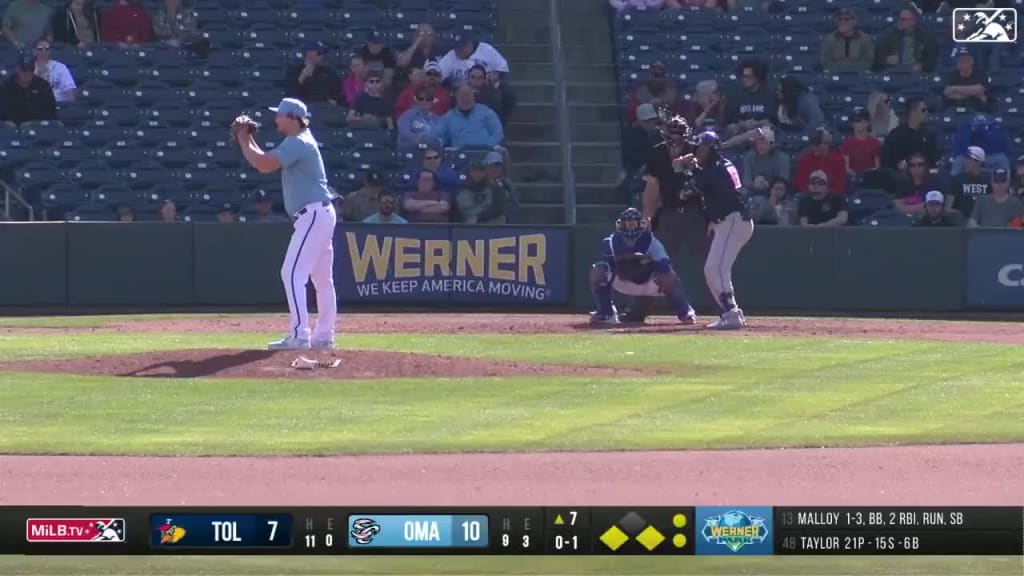How the Minors’ new challenge system works
This browser does not support the video element.
This story was excerpted from Jason Beck’s Tigers Beat newsletter. To read the full newsletter, click here. And subscribe to get it regularly in your inbox.
The 3-2 pitch in Justyn-Henry Malloy’s first-inning at-bat Sunday afternoon for Triple-A Toledo drew a rare called third strike on the sharp-eyed Tigers prospect. With runners at the corners and nobody out, Malloy didn’t swing, but he immediately offered a hand to his helmet, a signal that he wanted to challenge the call.
“I was very reluctant at first to use it,” he said later, “because you want to be very strategic in when to use it. I was pretty confident, but once you look at the board, you’re hoping you’re right.”
A chatter came through the crowd at Fifth Third Field as it waited for the video board to show whether the pitch indeed hit the strike zone. The graphic, much like what Tigers fans see on TV after close pitches, came up a few seconds later. It showed Indianapolis starter Kent Emanuel’s pitch started high and never made it in the zone, drifting inside as well.
The strike call was reversed, and instead of runners at the corners and one out, the bases were loaded with nobody out, setting up a two-run inning.
Welcome to automated balls and strikes, the newest feature at Mud Hens and Triple-A games. The Hens’ just-finished homestand was the first with the system in place through the Hawk-Eye tracking system installed at each park. How it’s utilized is split between two methods in each six-game series.
For the first three games (Tuesday through Thursday), calls throughout the game are made with the automated system, relayed through an earpiece worn by the home-plate umpire. There are no appeals and no arguments.
For the last three games (Friday through Sunday), plate umpires call balls and strikes, but pitchers, catchers and batters can challenge. Each team gets three challenges. If a challenge is successful, the team keeps it for later. If a call is confirmed, the team loses that challenge.
This browser does not support the video element.
It adds a new strategy for teams to figure out, much like batter timeouts and pitcher pickoffs in the Major Leagues this year. But with ball-strike challenges, only certain players may decide whether to challenge, and they’re not allowed to get feedback from the dugout.
“I think the fans probably like the challenge a little bit more, because they get to watch it on the scoreboard,” Mud Hens manager Anthony Iapoce said. “I just like it because it puts it in the players’ hands. It makes them make a tough decision whether to put themselves before the team. That’s a challenge sometimes in this game.”
The Mud Hens are quickly learning the system. On defense, Iapoce lets catchers decide whether to challenge. Offensively, he’d prefer that hitters save challenges, but he wants them to step up if they're confident.
Arguably, no one is gathering the nuances like Malloy, who got a taste of the system last year in the Arizona Fall League. His eye for the strike zone was one skill that drew the Tigers to acquire him from Atlanta in the Joe Jiménez trade last winter.
“Whenever he takes a pitch, everybody just yells ‘ball’ from the dugout,” Iapoce joked.
Malloy admittedly has tweaked his perceptions of the zone.
“One thing we’ve all noticed as a team is that it’s more ‘down’ than we actually know,” Malloy said. “Like, the ball [low] that we’ve learned to take is actually [a strike] through that system. And the ball up that we’ve all come to know as pitchers trying to throw the ball up and get strike one, it’s actually not a strike.”
Malloy’s second challenge Sunday demonstrated how that works. With a challenge left in the ninth inning, he disputed a 1-1 breaking ball that was called a strike. The scoreboard graphic showed the ball just catching the bottom inside corner of the zone on its way down.
“It’s a little different, especially on challenges when you see the ball nicks the strike zone,” center fielder Parker Meadows said.
The call was confirmed, setting up a high fastball that Malloy swung at for strike three.
“We’ve come to realize that on defense, we want to challenge balls down,” Malloy said. “And on offense, we want to challenge the ball up.”

